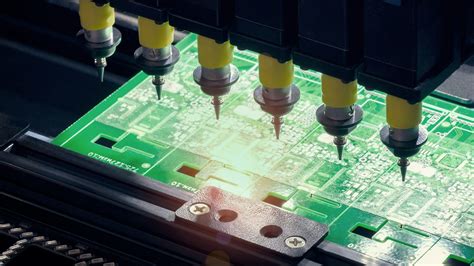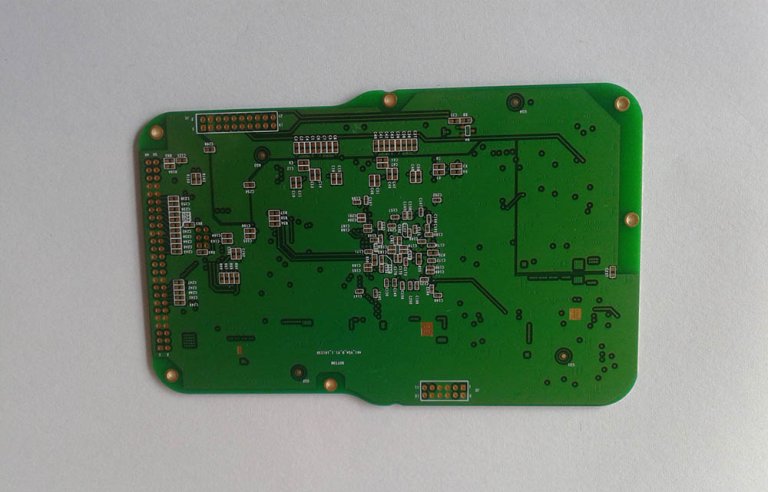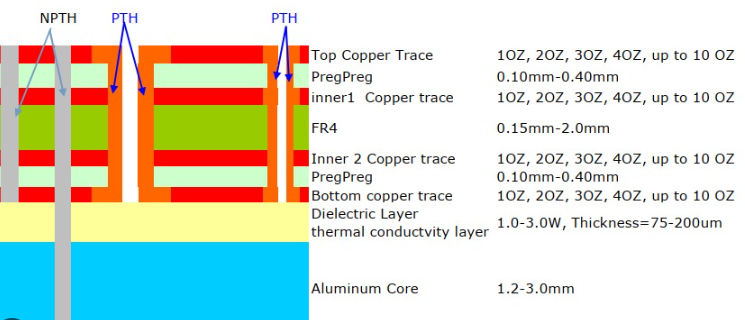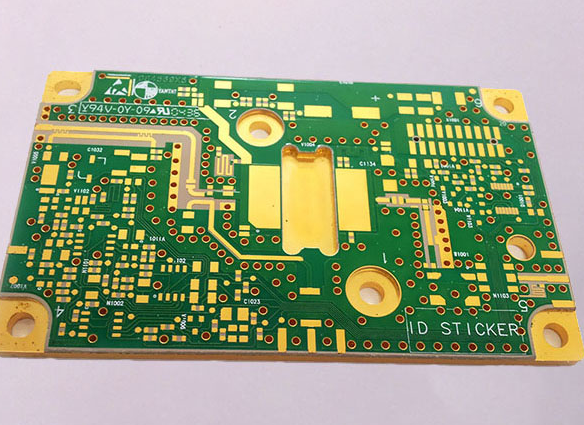Metal core pcb prototype
Advantages Of Metal Core PCB Prototypes In High-Power Applications
Metal core printed circuit boards (PCBs) have emerged as a pivotal innovation in the realm of high-power applications, offering a multitude of advantages that make them indispensable in various industries. These PCBs, characterized by their metal core, typically aluminum or copper, provide superior thermal management, mechanical stability, and electrical performance. As high-power applications continue to evolve, the demand for efficient and reliable PCB solutions has never been more critical. Consequently, understanding the benefits of metal core PCB prototypes is essential for engineers and designers aiming to optimize their systems.
One of the most significant advantages of metal core PCBs is their exceptional thermal conductivity.
In high-power applications, components often generate substantial amounts of heat, which, if not managed properly, can lead to system failures or reduced performance. The metal core in these PCBs acts as a heat sink, efficiently dissipating heat away from critical components. This enhanced thermal management ensures that the components operate within their optimal temperature range, thereby extending their lifespan and improving overall system reliability. Furthermore, the ability to maintain lower operating temperatures allows for higher power densities, enabling more compact and efficient designs.
In addition to thermal management, metal core PCBs offer superior mechanical stability compared to their traditional counterparts.
The metal core provides a robust foundation that reduces the risk of warping or bending, which can be particularly beneficial in applications subjected to mechanical stress or extreme environmental conditions. This increased durability ensures that the PCB maintains its structural integrity over time, reducing the likelihood of mechanical failures and enhancing the overall reliability of the system. Moreover, the rigidity of metal core PCBs facilitates easier handling and assembly, streamlining the manufacturing process and reducing production costs.
Another notable advantage of metal core PCBs is their improved electrical performance.
The metal core can serve as a ground plane, reducing electromagnetic interference (EMI) and enhancing signal integrity. This is particularly important in high-power applications where maintaining signal quality is crucial for system performance. The reduced EMI not only improves the reliability of the system but also ensures compliance with stringent regulatory standards. Additionally, the metal core’s ability to support higher current capacities allows for more efficient power distribution, further optimizing the performance of high-power applications.
Transitioning from the technical benefits, it is also important to consider the practical implications of using metal core PCB prototypes in the design and development process.
Prototyping with metal core PCBs allows engineers to evaluate and refine their designs before committing to full-scale production. This iterative process helps identify potential issues early, reducing the risk of costly redesigns and ensuring that the final product meets the desired specifications. The ability to test and validate designs in real-world conditions provides invaluable insights, enabling engineers to make informed decisions and optimize their systems for maximum performance and reliability.
In conclusion, the advantages of metal core PCB prototypes in high-power applications are manifold. Their superior thermal management, mechanical stability, and electrical performance make them an ideal choice for a wide range of industries. By leveraging these benefits, engineers and designers can develop more efficient, reliable, and compact systems that meet the ever-increasing demands of high-power applications. As technology continues to advance, the role of metal core PCBs in driving innovation and enhancing system performance will undoubtedly become even more significant.
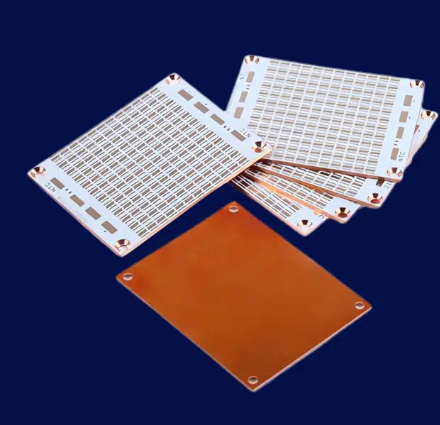
Design Considerations For Metal Core PCB Prototypes
When embarking on the design of metal core PCB (Printed Circuit Board) prototypes, several critical considerations must be taken into account to ensure optimal performance and reliability.
Metal core PCBs, often utilized in applications requiring efficient heat dissipation, such as LED lighting, power supplies, and automotive electronics, present unique challenges and opportunities compared to traditional FR4-based PCBs. Therefore, understanding the nuances of their design is paramount.
To begin with, the choice of the metal core material is a fundamental decision that significantly impacts the thermal management capabilities of the PCB.
Common materials include aluminum, copper, and steel, each offering distinct thermal conductivity properties. Aluminum is frequently preferred due to its balance of cost-effectiveness and thermal performance, whereas copper, though more expensive, provides superior thermal conductivity. The selection of the core material should align with the specific thermal requirements of the application, ensuring that the PCB can effectively dissipate heat generated by high-power components.
Transitioning to the layout design, it is essential to consider the placement of heat-generating components.
Strategic positioning can enhance heat dissipation and prevent thermal hotspots. Components that generate significant heat should be placed in proximity to the metal core to facilitate efficient heat transfer. Additionally, the use of thermal vias, which are plated through-holes that connect the top and bottom layers of the PCB to the metal core, can further enhance thermal management by providing additional pathways for heat to escape.
Another critical aspect is the dielectric layer, which electrically insulates the conductive layers from the metal core while maintaining thermal conductivity.
The thickness and material of the dielectric layer must be carefully selected to balance electrical insulation and thermal performance. Thinner dielectric layers generally offer better thermal conductivity but may compromise electrical insulation, necessitating a meticulous evaluation of the trade-offs involved.
Moreover, the choice of solder mask and surface finish plays a pivotal role in the overall performance and durability of the metal core PCB.
The solder mask, which protects the PCB from environmental factors and prevents solder bridges during assembly, must be compatible with the thermal expansion properties of the metal core. Similarly, the surface finish, which protects the exposed copper pads and facilitates soldering, should be chosen based on the specific requirements of the application, such as operating temperature and environmental conditions.
In addition to these considerations, the mechanical properties of the metal core PCB must not be overlooked.
The metal core adds rigidity and strength to the PCB, which can be advantageous in applications subject to mechanical stress. However, this increased rigidity also means that the PCB is less flexible, which can pose challenges during assembly and installation. Therefore, the design must account for potential mechanical stresses and ensure that the PCB can withstand the intended operating conditions without failure.
Furthermore, the manufacturing process for metal core PCBs differs from that of traditional PCBs, necessitating collaboration with experienced manufacturers.
The drilling, routing, and lamination processes must be adapted to accommodate the metal core, and specialized equipment may be required. Engaging with manufacturers early in the design process can help identify potential issues and ensure that the prototype can be produced efficiently and cost-effectively.
In conclusion, designing metal core PCB prototypes involves a comprehensive understanding of thermal management, material selection, component placement, and mechanical properties. By carefully considering these factors and collaborating with experienced manufacturers, designers can create robust and reliable metal core PCBs that meet the demanding requirements of high-power applications.
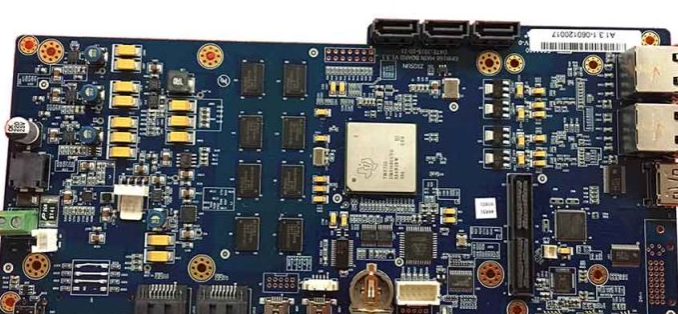
Thermal Management Solutions Using Metal Core PCB Prototypes
Metal core printed circuit boards (MCPCBs) have emerged as a pivotal solution in the realm of thermal management for electronic devices. As electronic components become increasingly powerful and compact, the need for efficient heat dissipation mechanisms has never been more critical. MCPCBs, with their unique construction, offer a robust solution to this challenge, ensuring the longevity and reliability of electronic systems.
At the heart of an MCPCB is a metal core, typically composed of aluminum or copper, which serves as a thermal substrate.
This core is sandwiched between layers of dielectric material and copper circuitry. The primary advantage of this configuration lies in its ability to conduct heat away from critical components, thereby preventing overheating and potential failure. Unlike traditional PCBs, which rely on thermal vias and heat sinks, MCPCBs integrate thermal management directly into the board’s structure, offering a more efficient and compact solution.
The process of prototyping MCPCBs involves several meticulous steps, each crucial to achieving optimal thermal performance.
Initially, the metal core is selected based on the specific thermal requirements of the application. Aluminum is often favored for its balance of thermal conductivity and cost-effectiveness, while copper is chosen for applications demanding superior thermal performance. Following the selection of the core material, a dielectric layer is applied. This layer must possess excellent thermal conductivity while maintaining electrical insulation properties, ensuring that heat is efficiently transferred to the metal core without compromising the board’s electrical integrity.
Subsequently, the copper circuitry is etched onto the dielectric layer.
This step requires precision to ensure that the circuit paths are accurately formed, facilitating effective electrical performance. The copper layer’s thickness can be adjusted based on the current-carrying requirements of the application, with thicker layers providing lower resistance and better heat dissipation. Once the circuitry is in place, the board undergoes a series of tests to verify its thermal and electrical performance. These tests are critical in identifying any potential issues that could compromise the board’s functionality in real-world applications.
The advantages of using MCPCBs in thermal management are manifold.
Firstly, they offer superior heat dissipation compared to traditional PCBs, making them ideal for high-power applications such as LED lighting, power supplies, and automotive electronics. By efficiently conducting heat away from sensitive components, MCPCBs help maintain optimal operating temperatures, thereby enhancing the overall reliability and lifespan of the device. Additionally, the integration of thermal management into the PCB design reduces the need for external cooling solutions, leading to more compact and lightweight electronic devices.
Moreover, MCPCBs provide enhanced mechanical stability, which is particularly beneficial in applications subject to high levels of mechanical stress.
The metal core adds rigidity to the board, reducing the risk of damage due to bending or vibration. This robustness, combined with superior thermal performance, makes MCPCBs an attractive choice for a wide range of demanding applications.
In conclusion, metal core PCB prototypes represent a significant advancement in thermal management solutions for electronic devices. Their unique construction, combining a metal core with dielectric and copper layers, offers unparalleled heat dissipation capabilities. As electronic devices continue to evolve, the demand for efficient thermal management solutions will only grow, solidifying the role of MCPCBs as a cornerstone in the design and development of reliable, high-performance electronics.
Comparing Metal Core PCB Prototypes To Traditional PCB Materials
When comparing metal core PCB prototypes to traditional PCB materials, it is essential to understand the fundamental differences and advantages that each type offers. Metal core printed circuit boards (MCPCBs) are designed with a metal substrate, typically aluminum or copper, which provides superior thermal conductivity compared to the conventional fiberglass or epoxy substrates used in traditional PCBs. This enhanced thermal management is particularly beneficial in applications where heat dissipation is critical, such as in high-power LED lighting, automotive electronics, and power supplies.
One of the primary advantages of metal core PCBs is their ability to efficiently dissipate heat away from critical components.
The metal core acts as a heat sink, drawing heat away from the surface and distributing it more evenly across the board. This results in lower operating temperatures for the components, which can significantly extend their lifespan and improve overall reliability. In contrast, traditional PCBs rely on thermal vias and heat sinks to manage heat, which can be less effective and more complex to design.
Furthermore, the mechanical stability of metal core PCBs is another notable benefit.
The metal substrate provides a robust foundation that can withstand mechanical stress and vibration better than traditional materials. This makes MCPCBs an ideal choice for applications subjected to harsh environmental conditions or mechanical wear and tear. Traditional PCBs, while versatile and widely used, may not offer the same level of durability in such demanding scenarios.
In addition to thermal and mechanical advantages, metal core PCBs also offer improved electrical performance.
The metal substrate can reduce electromagnetic interference (EMI) and enhance signal integrity, which is crucial in high-frequency applications. This can lead to more reliable and efficient electronic devices. Traditional PCBs, although capable of handling a wide range of frequencies, may require additional design considerations and components to achieve similar levels of performance.
However, it is important to consider the potential drawbacks of metal core PCBs.
One of the main challenges is the cost. The materials and manufacturing processes involved in producing MCPCBs are generally more expensive than those for traditional PCBs. This can make them less attractive for cost-sensitive applications or for use in consumer electronics where price competitiveness is a key factor. Additionally, the design and fabrication of metal core PCBs can be more complex, requiring specialized knowledge and equipment.
Despite these challenges, the benefits of metal core PCBs often outweigh the drawbacks in applications where thermal management, mechanical stability, and electrical performance are paramount. As technology continues to advance, the demand for high-performance PCBs is likely to grow, driving further innovation and potentially reducing costs over time.
In conclusion, while traditional PCBs remain a versatile and cost-effective solution for many electronic applications, metal core PCB prototypes offer distinct advantages in terms of thermal management, mechanical stability, and electrical performance. By carefully considering the specific requirements of a given application, engineers and designers can make informed decisions about whether to utilize metal core or traditional PCB materials. As the industry evolves, the continued development and refinement of both types of PCBs will ensure that a wide range of electronic devices can meet the ever-increasing demands of modern technology.

